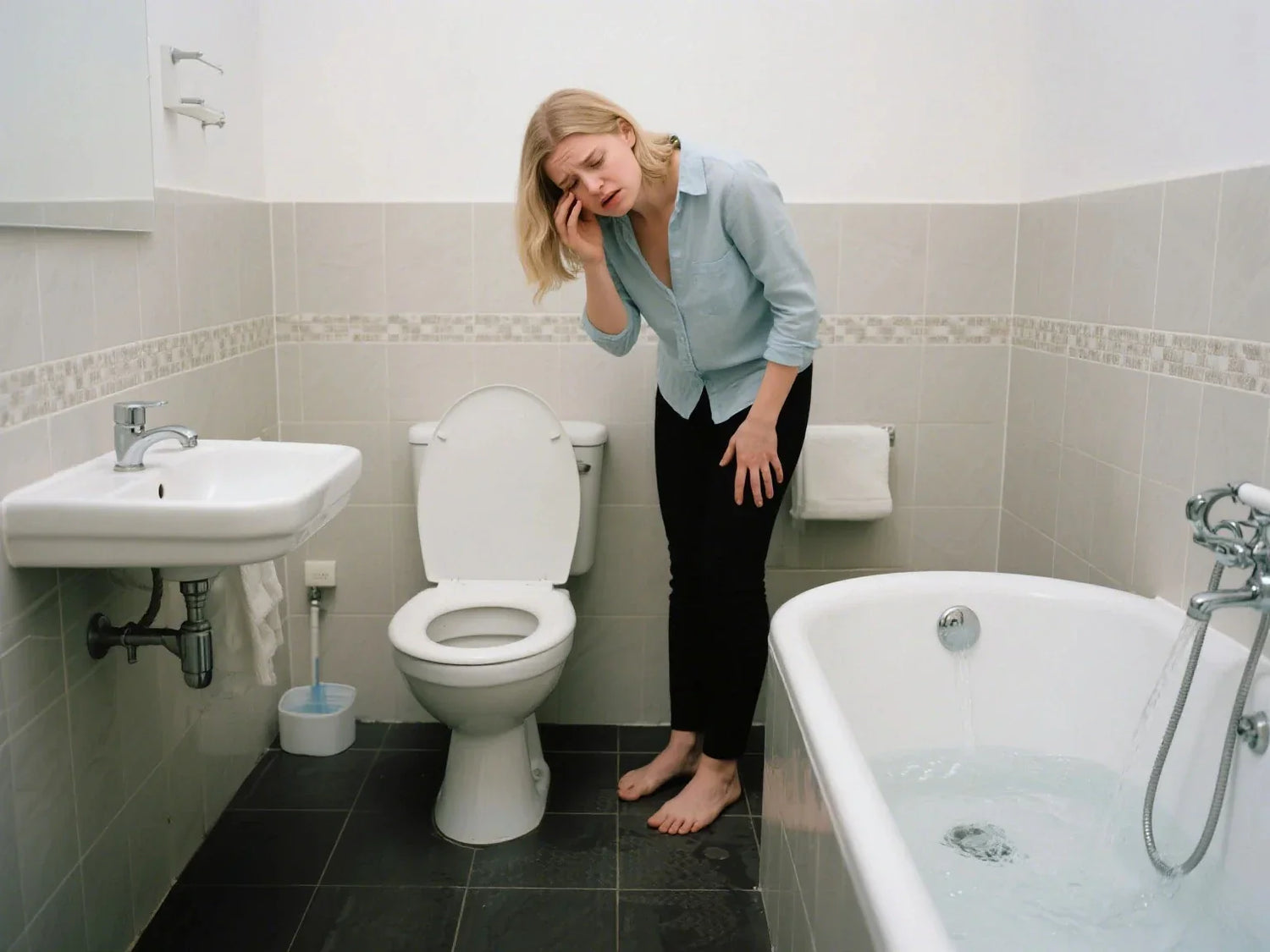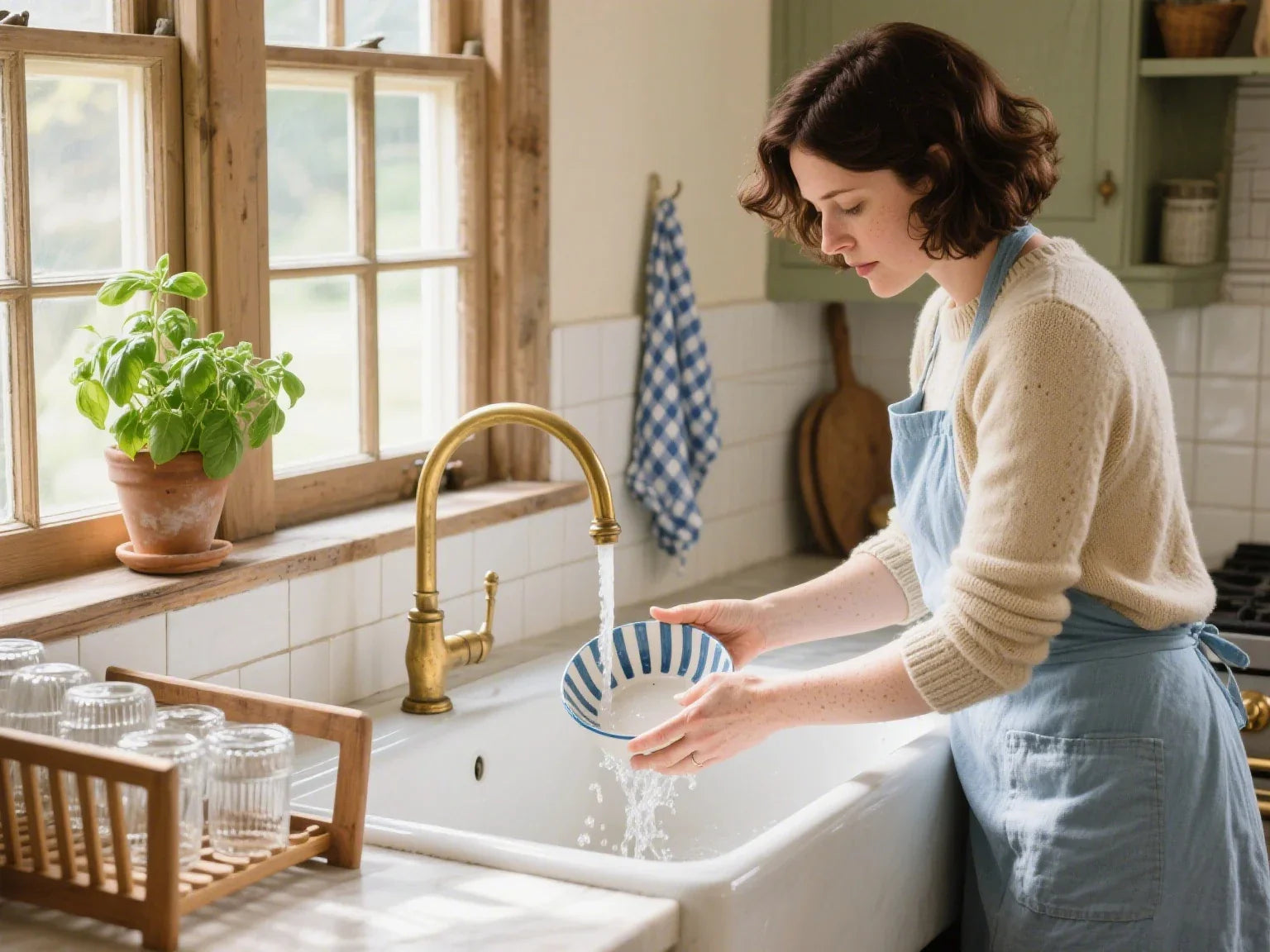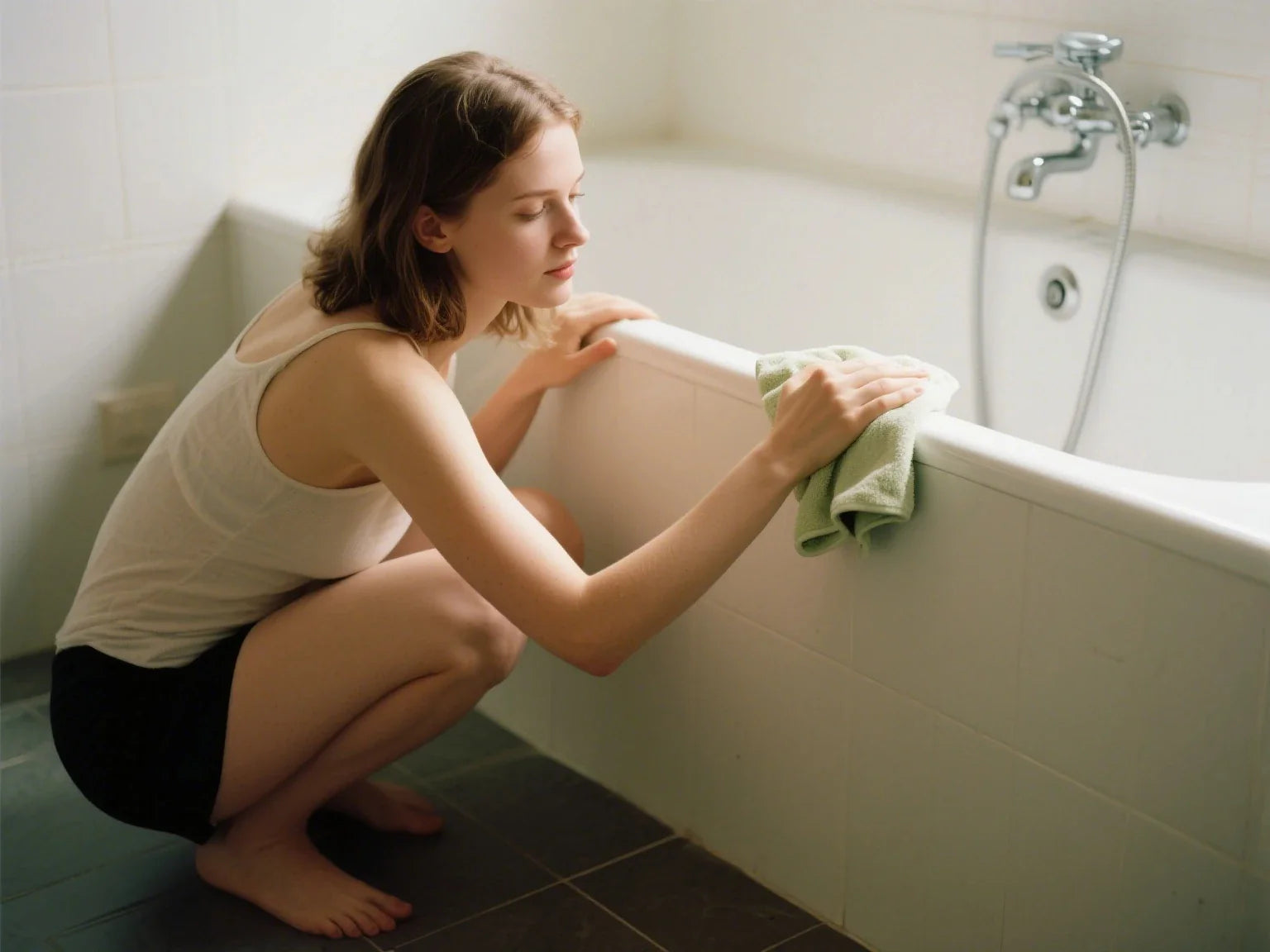What Does It Mean When Your Toilet Bubbles When Flushed?
- A partial clog in the toilet's drain or a connecting pipe.
- A blocked plumbing vent, often on your roof.
- A restriction or blockage in your main sewer line or septic system.
Immediate Next Steps
- Pause water use. If other fixtures like your sink or tub are also draining slowly or making gurgling sounds, stop running water throughout the house.
- Try a flange plunger. Perform 10 to 15 firm plunges. A flange plunger is designed specifically for toilets and creates a much better seal than a standard cup plunger.
- Do not flush again if the problem is worse. If the bubbling persists or water starts backing up into the tub or shower, stop flushing immediately. This is a clear sign the blockage is downstream and more flushing will only cause an overflow.
How Your Toilet and Venting System Work
- Toilet Bowl and P-Trap: When you flush, water and waste leave the bowl and pass through an S-shaped pipe called a P-trap. This trap holds a small amount of water to block sewer gas from entering your home.
- Waste Stack: The waste then flows into a larger vertical pipe, the waste stack, which carries it down and out of your house.
- Vent Stack (or Vent Pipe): This is the unsung hero of your plumbing. A vertical pipe runs from your main drain line all the way up through your roof. Its only job is to let air enter the plumbing system. This equalizes the air pressure, allowing water to flow freely down the drains without creating a vacuum.
- Main Drain and Sewer Line: All the waste pipes in your home connect to a main drain, which then leads to either the city's municipal sewer line or your private septic tank.

Troubleshooting: Identify Your Bubbling Scenario
Is it just one toilet?
If only one toilet is bubbling and all other drains in the house are working perfectly, the problem is likely a partial clog located in that toilet's trap or the branch drain line it connects to.
Does the toilet gurgle when a nearby fixture is used?
If your toilet bubbles when flushed and you also hear gurgling sounds from the tub or sink drain right next to it, this points to a shared blockage or a vent pipe issue affecting that specific bathroom group.
Are drains slow and gurgling everywhere?
When you have widespread slow drains, bubbling toilets, and gurgling noises across multiple floors or bathrooms, the culprit is almost certainly a blockage in the main sewer line or a completely blocked main vent stack.
Do symptoms appear after heavy rain or in cold weather?
If bubbling gets worse after a big storm, it could signal a crack or sag in your buried sewer line that is allowing groundwater to flood the pipe. In freezing weather, a vent stack can become blocked by frost.
Are you on a septic system?
For homes with a septic system, a bubbling toilet is often one of the first signs the septic tank is full or there's an issue with the drainfield. You might also notice foul odors outdoors or soggy patches in your yard.
Diagnostic Flowchart—Pinpoint the Cause of Toilet Bubbles When Flushed
Plunge with a Flange Plunger
Use a Closet Auger (Toilet Snake)
A closet auger is a short, specialized drain snake designed to clear obstructions just beyond the toilet's P-trap.
Tool: A 3 to 6-foot toilet auger.
Action: Feed the auger's cable into the toilet drain until you feel the resistance. Crank the handle to break up or hook onto the blockage, then retrieve it. Run the auger through the drain one or two times.
Result: If this clears the bubbling, that means the clog was within the first few feet of the drain. If it has no effect, the problem is further down the line or is a vent issue.
Inspect the Plumbing Vent
A blocked vent stack is a very common cause of a gurgling toilet.
Safety First: Do not climb onto your roof if you are not comfortable or do not have proper safety equipment. Roof work is dangerous.
Ground Inspection: From the ground, use binoculars to look at the vent pipe on your roof. Can you see leaves, a bird's nest, or other debris blocking the opening?
Clearing (If Safe): If you can safely access the roof, you can try to clear the debris by hand (wearing gloves). For deeper blockages, a plumber might use a garden hose to spray water down the vent or use a long drain snake. If you attempt this with a hose, have a spotter inside to watch for any water backing up into fixtures.
Test for a Main Sewer Line Clog
This test helps determine if the blockage is in the main line affecting the whole house.
Test: Fill the bathtub closest to the affected toilet with a few inches of water.
Observe: Pull the drain plug and look at the toilet. If the toilet bowl water bubbles, gurgles, or rises as the tub drains, you almost certainly have a main sewer blockage or a severe vent issue. The large volume of water from the tub is unable to drain properly and is pushing air back through the toilet.
Check the Cleanout: Locate the sewer cleanout pipe outside your home. If you open the cap and see standing water, the blockage is between the cleanout and the street. If it's dry, the clog is between the cleanout and your house.
Check Your Septic System
If your home has a septic system, bubbling is a red flag.
Pumping Schedule: When was the last time the tank was pumped? Most septic tanks need pumping every 3-5 years. An overdue tank is a likely cause.
Outdoor Signs: Walk around your drainfield. Do you see unusually green or soggy patches of grass? Do you smell sewage odors? These are signs of a failing system.
Action: If you suspect a septic problem, stop doing laundry and limit water use immediately. Schedule a septic inspection with a qualified professional.
Red Flags—When to Immediately Call a Plumber
Stop your DIY efforts and call a professional plumber if you see any of these signs:
Water or sewage is backing up into your tub, shower, or floor drains.
You smell a foul, sewer-gas odor inside your home.
Multiple fixtures are affected, and plunging or augering did not help.
The bubbling and gurgling comes back soon after you thought you fixed it.

Common Causes and How to Fix Each One
| Cause | Signs & Symptoms | How to Fix It |
|---|---|---|
| Partial Drain Clog | Bubbling in a single toilet; slow flush. Caused by too much toilet paper, "flushable" wipes (which don't break down), or hygiene products. | Fix: Use a flange plunger or toilet auger. Prevention: Only flush human waste and toilet paper. Throw everything else in the trash. |
| Blocked Vent Stack | Gurgling sounds from multiple drains when one is used; slow drains; faint sewer odor. Caused by leaves, debris, animal nests, or frost. | Fix: Requires safe clearing from the roof, often by a professional. Prevention: Install a screen or guard over the vent pipe opening. |
| Main Sewer Line Problem | Bubbling in multiple toilets; water backing up in the lowest drain (shower, floor drain); widespread slow drains. Caused by tree roots, grease buildup, or a collapsed/cracked pipe. | Fix: This requires a pro. They will use a camera to inspect the line and then clear it with a large drain snake. Prevention: Avoid flushing grease and monitor for early warning signs. |
When a sewer pipe is partially clogged, individual toilets may experience bubbling or slow flushing, often due to debris. This can be cleared with a dedicated plunger or unplugger. Normally, only flush toilet paper and waste.
A clogged vent pipe can cause gurgling noises from multiple drain outlets, slow drainage, and a smell. This is usually caused by debris and requires professional cleaning. Installing a protective net can be very effective and can save you a lot of trouble.
A problem with the main sewer line can cause bubbling in several toilets and poor drainage in lower areas. This is likely caused by tree roots that have gotten in. You'll need a professional to fix this. If the situation is serious, the pipes may need to be repaired or even replaced and you'll need a professional to fix this.
Problems with the septic system can cause widespread slow drainage and muddy or odorous outdoor areas. Contact a professional for cleaning and inspection.
Tool and Safety Guide for DIY Toilet Bubble Fixes
- Flange Plunger: A must-have for every home.
- Closet Auger (Toilet Auger): Your best defense against clogs just past the P-trap.
- Heavy-Duty Rubber Gloves: Protect your hands from bacteria.
- Eye Protection: To guard against unexpected splashes.
- Flashlight: For inspecting drains and cleanouts.
- Never Use Chemical Drain Cleaners: These harsh chemicals rarely fix the types of clogs that cause bubbling. They can damage your pipes, harm your septic system's beneficial bacteria, and pose a serious chemical hazard if you later need to plunge or snake the drain.
- Practice Roof Safety: If you must check a roof vent, ensure your ladder is on stable ground. Have a spotter with you. If you feel unsafe for any reason, stop and call for help.
- Know When to Stop: A stubborn clog can be a sign of a more serious plumbing issue. Pushing too hard with an auger can damage the toilet's porcelain or get the snake stuck. If you're not making progress, it's time to call a professional.

Preventing Future Toilet Bubbles When Flushed
Practice Smart Flushing Habits: Your toilet is not a trash can. The only things that should ever be flushed are human waste and toilet paper. Avoid flushing wipes (even "flushable" ones), paper towels, dental floss, cotton swabs, and hygiene products.
Perform Regular Maintenance:
Once a quarter, check that all your sink and tub drain strainers are clean.
If you have a screen on your roof vent, check it for debris annually (if safe to do so).
If you have a septic system, stick to a regular pumping schedule (every 3-5 years is typical).
Address Hard Water: If you have very hard water, mineral scale can build up inside your toilet's internal passages and in the drain pipes, restricting airflow and flow. A water softener can help prevent this long-term problem.

DIY vs. Pro: When to Call a Plumber or Septic Specialist
| Symptom | DIY Action | When to Call a Professional |
| Single toilet bubbles, drains a bit slow | Plunge with flange plunger, then use a closet auger if needed. | If plunging and augering do not solve the problem. |
| Toilet bubbles and nearby tub gurgles | Plunge the toilet. Check the roof vent for blockages if you can do so safely. | If symptoms persist, as this often indicates a vent or shared branch line issue. |
| Bubbling in multiple toilets; water backs up | Stop using all water. This is an emergency. | Call a plumber immediately. This is a clear sign of a main sewer line blockage. |
| All drains are slow; gurgling throughout house | Check your main sewer cleanout or septic tank status. | Call a professional. This requires a camera inspection and likely hydro-jetting. |
| Septic system warning signs (odor, wet yard) | Limit water use. | Call a septic specialist immediately. Do not wait. |
- DIY Tools: A good plunger and auger can cost $40 - $80.
- Plumber Service Call: A standard visit to diagnose and snake a drain often starts around $150 - $350.
- Sewer Camera Inspection: $250 - $500+.
- Hydro-Jetting: $400 - $1,000+, depending on the line length and severity.
- Septic Tank Pumping: $300 - $600+.








Leave a comment
This site is protected by hCaptcha and the hCaptcha Privacy Policy and Terms of Service apply.